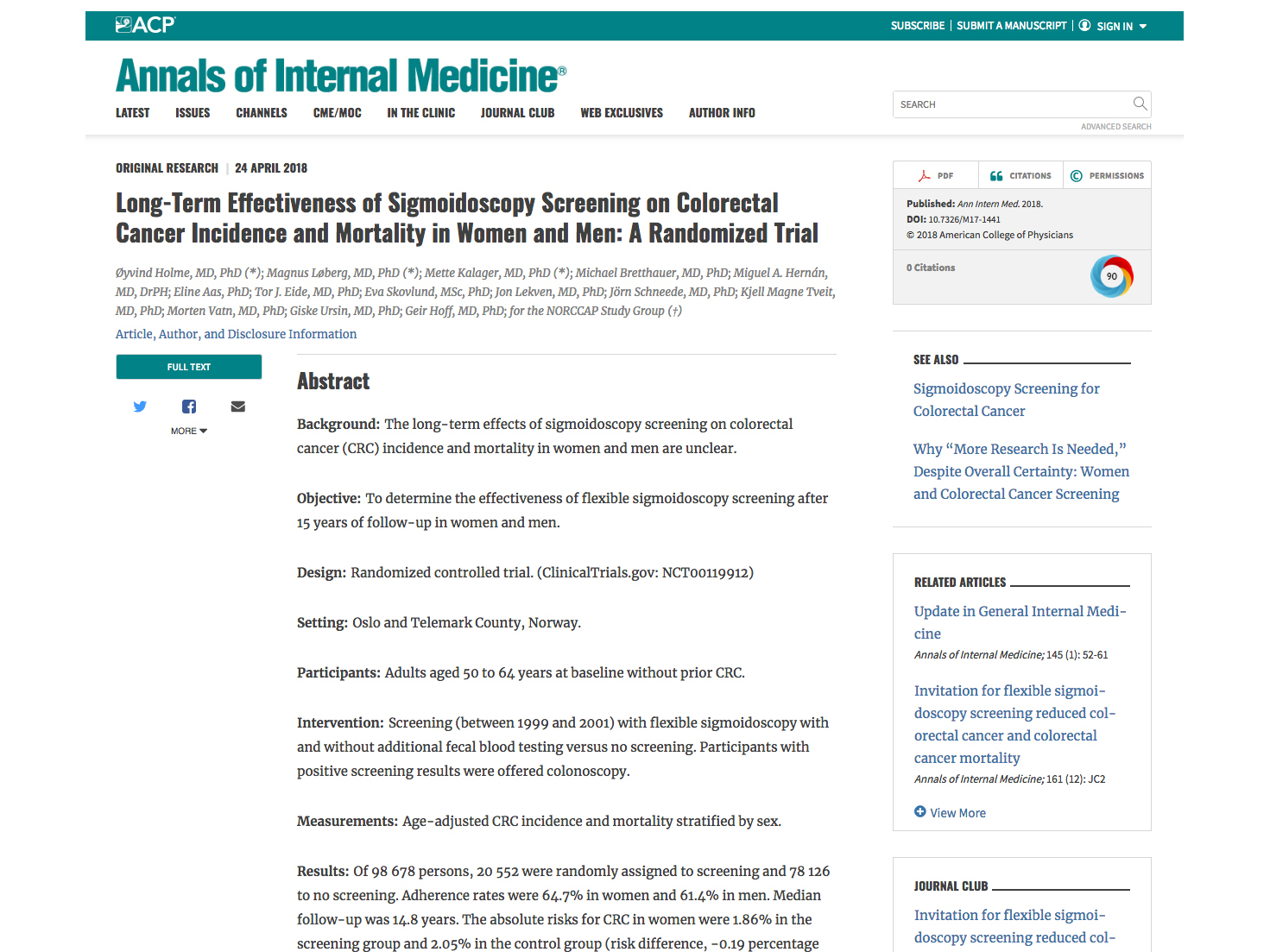Members of the Norwegian Colorectal Cancer Prevention Study Group (NORCCAP), including Michael Bretthauer, Frontier Science President, and Mette Kalager, MD, PhD, Board Member, have authored a study published April 24, 2018 in the Annals of Internal Medicine, Long-Term Effectiveness of Sigmoidoscopy Screening on Colorectal Cancer Incidence and Mortality in Women and Men: A randomized trial. The study objective is to determine the effectiveness of flexible sigmoidoscopy screening after 15 years of follow-up in women and men.
Important Sex Differences
This research provides data on Colorectal Cancer (CRC) incidence and mortality after up to 17 years of follow-up in 98,678 women and men from Oslo and Telemark County, Norway. The data are based on NORCCAP, a population-based, randomized trial of sigmoidoscopy screening with and without additional immunochemical fecal occult blood testing versus no screening. The researchers provide a sex-specific analysis, presenting their results stratified by sex. Authors conclude that the effect of sigmoidoscopy screening in Norway was long-lasting in men, with absolute risk reductions for CRC incidence and mortality. However, they found little or no effect in women, and suggest that their results may have implications for future screening recommendations and trial design, where sex-stratified evaluations and sample size calculations should be considered.
Consequences for Clinical Practice
The Annals of Internal Medicine April 24th issue also includes an editorial on this research, Why “More Research Is Needed,” Despite Overall Certainty: Women and Colorectal Cancer Screening written by researchers Kirsten Bibbins-Domingo PhD, MD, MAS, from University of California, San Francisco and John Inadomi, MD, University of Washington, Seattle.
Holme Ø, Løberg M, Kalager M, Bretthauer M, Hernán MA, Aas E, et al. Long-Term Effectiveness of Sigmoidoscopy Screening on Colorectal Cancer Incidence and Mortality in Women and Men: A Randomized Trial. Ann Intern Med. [Epub ahead of print 24 April 2018] doi: 10.7326/M17-1441
